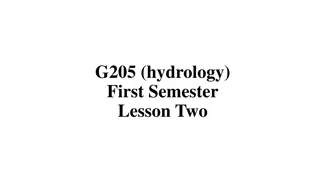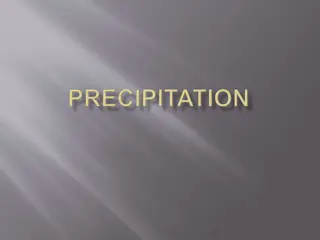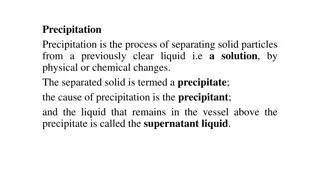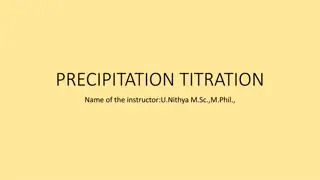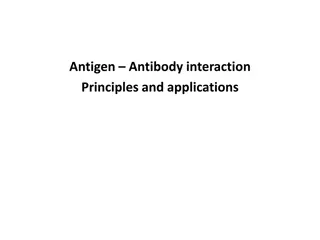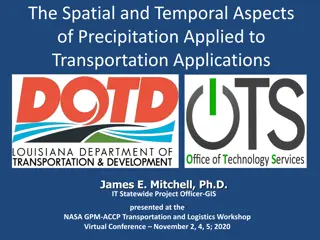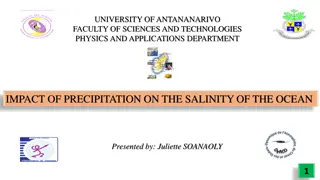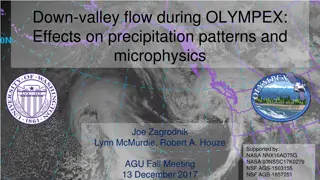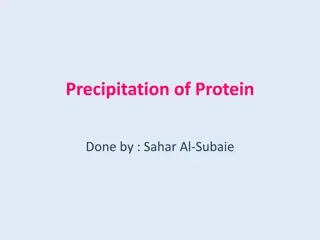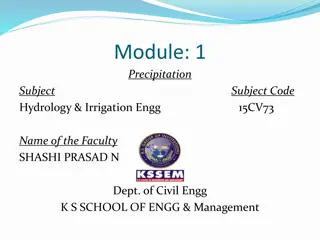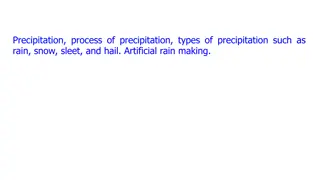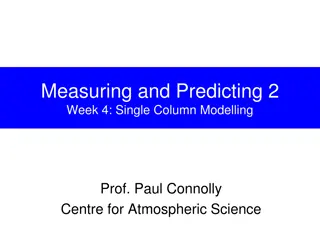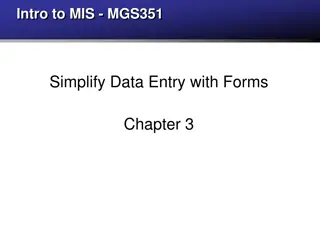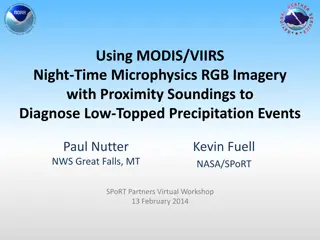Forms of Precipitation and How They Form
Precipitation is any form of water that falls to earth and occurs when water evaporates into the atmosphere, saturates it, then condenses back into water. There are 5 main types of precipitation: rain, sleet, hail, snow, and freezing rain. Rain forms as water droplets in clouds collide and grow too heavy to stay airborne. Snow forms when water vapor goes straight to ice, forming ice crystals that attract other water droplets. Sleet is a mix of snow and rain that goes through a liquid stage before turning into ice. Hailstones form as ice crystals try to fall but get pushed back up into the cloud, collecting more water and increasing in size.
Download Presentation

Please find below an Image/Link to download the presentation.
The content on the website is provided AS IS for your information and personal use only. It may not be sold, licensed, or shared on other websites without obtaining consent from the author.If you encounter any issues during the download, it is possible that the publisher has removed the file from their server.
You are allowed to download the files provided on this website for personal or commercial use, subject to the condition that they are used lawfully. All files are the property of their respective owners.
The content on the website is provided AS IS for your information and personal use only. It may not be sold, licensed, or shared on other websites without obtaining consent from the author.
E N D
Presentation Transcript
Forms of Precipitation How rain/hail/sleet/snow form
What is "Precipitation"? -Precipitation is any form of water that falls to earth.
How does precipitation occur? -Precipitation occurs when water evaporates up into the atmosphere -It then stays in the atmosphere until the atmosphere is saturated. -When this happens it has no choice but to condense back into water and drop down to the earth. (evaporation is the change of water from a liquid to a gas) (saturation point is when an object cannot hold any more of something) (condensation is the change of water from a gas to a liquid)
There are five types of precipitation that we will be examining today: -rain -sleet -hail -snow -freezing rain
Rain -clouds are made up of dust and water droplets that condense around them. -these droplets then collide into other droplets, swallowing them and becoming bigger. -Eventually these droplets are so big that the cloud cannot keep them afloat in the atmosphere, and they fall.
Snow -Snow occurs when the atmosphere is so cold that instead of the water gas condensing to form water, it goes straight to ice, forming ice crystals. These ice crystals then attract the water droplets that have not yet frozen. -Eventually they become so heavy they must fall. -Snow can be in snow pellet or snowflake form.
Sleet -Sleet is really a mixture of snow and rain. -Unlike normal snow, the snow in sleet goes through the liquid stage before becoming ice. -This is why it is "sludgy" and not light and fluffy.
Hailstones -Hailstones happen when ice crystals form and try to fall. -If it is windy they get caught by gusts of wind and pushed back up into their cloud, gathering more water and becoming bigger. -This can happen two or three times before they fall. This is why they are so hard and dense.
Freezing Rain -Freezing rain happens when the water droplets become super-chilled. -They do not freeze in the air and become ice crystals, instead they freeze on impact with something on earth. -This can also be called "glaze".


